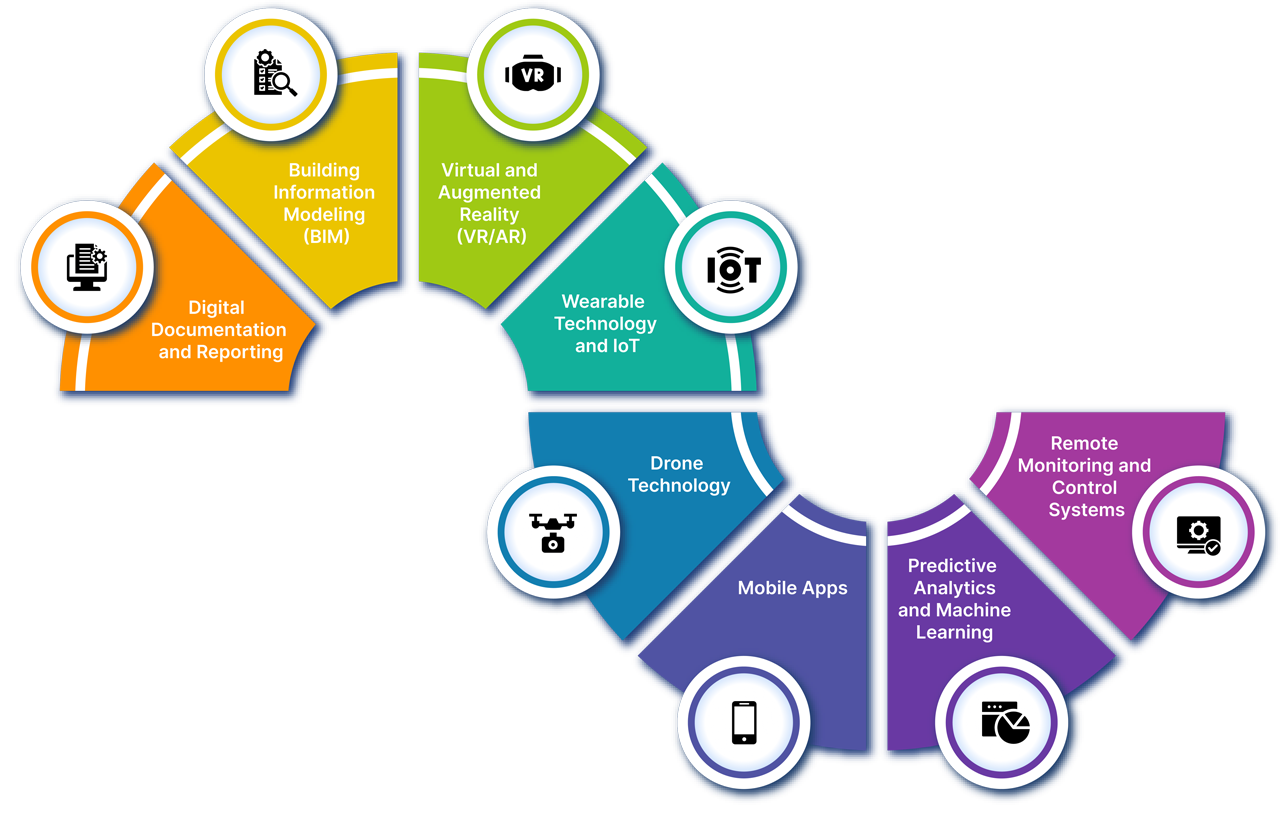Effective management of EHS is crucial for businesses to ensure compliance with regulations, safeguard their workforce, and reduce environmental impact. In recent years, technological advancements have advanced EHS management, offering solutions that enhance safety monitoring, reconceptualize site inspections, safeguard accidents, and provide immersive training experiences. In this blog article, you will explore diverse ways advanced technology is essential in enhancing EHS safety management within the construction industry.
Let's get started!
What Is EHS Management?
EHS management is crucial for organizations to safeguard their employees, communities, and environment, comply with legal requirements, and maximize overall sustainability. Many organizations have dedicated EHS departments or personnel overseeing and implementing environmental health and safety management systems.
Role of Technology in EHS Management

Digital Documentation and Reporting
It's high time to say goodbye to paperwork and manual reporting processes. With the advent of technology, construction industries now have access to digital platforms and software solutions that streamline EHS documentation and reporting. Permits, inspections, incident reports, and safety manuals can be digitized, ensuring easy access to critical information and facilitating real-time reporting of incidents or hazards.
Building Information Modeling (BIM)
Building Information Modeling (BIM) technology has emerged as a game-changer in construction safety. By creating comprehensive 3D models that encompass design, construction, and maintenance data, BIM enables EHS professionals to identify potential safety risks, simulate construction processes to assess safety implications, and develop effective emergency response strategies.
Wearable Technology and IoT
The integration of wearable technology and Internet of Things (IoT) devices is transforming safety practices on construction sites. Smart helmets, vests, and glasses with sensors can monitor workers' vital signs, detect environmental hazards, and provide real-time alerts for potential safety risks. IoT devices installed on construction sites collect data on air quality, noise levels, and temperature, ensuring compliance with safety regulations and promoting a safer working environment.
Drone Technology
Drones equipped with cameras and sensors are revolutionizing safety inspections and monitoring on construction sites. They provide valuable aerial data for assessing site conditions, identifying safety hazards, and conducting inspections in hard-to-reach areas. Drones enhance safety by reducing the need for manual inspections, minimizing worker exposure to risks, and improving overall situational awareness.
Virtual and Augmented Reality (VR/AR)
Virtual and Augmented Reality technologies are increasingly utilized for safety training and simulation in the construction industry. VR and AR simulations allow workers to undergo realistic training exercises, learn how to respond to emergencies, and operate machinery safely in a virtual environment. These immersive training solutions enhance safety awareness, improve preparedness, and reduce the risk of accidents on construction sites.
Mobile Applications
Mobile applications tailored for environmental health and safety management empower construction professionals to access safety guidelines, conduct inspections, report incidents, and communicate safety information anywhere on the construction site. These apps facilitate real-time collaboration among team members, streamline communication channels, and enhance overall safety awareness among workers.
Predictive Analytics and Machine Learning
Advanced analytics tools, powered by predictive analytics and machine learning algorithms, enable construction companies to analyze historical EHS data, identify patterns, predict potential safety issues, and recommend preventive measures. These technologies continuously improve risk assessments and safety protocols based on evolving construction site conditions and historical incident data, ultimately enhancing safety standards.
Remote Monitoring and Control Systems
Remote monitoring systems enable EHS professionals to remotely monitor construction sites in real time, allowing them to identify safety hazards, track progress, and intervene quickly in emergencies. These systems enhance situational awareness, enable proactive risk management, and contribute to creating safer working environments for construction workers.
Final Thoughts
Technology is transformative in EHS safety management within the construction industry. From digital documentation and wearable technology to drones and predictive analytics, technological innovations are revolutionizing safety practices, reducing accidents, and creating safer working environments for construction workers. Embracing these advancements is essential for construction companies looking to stay ahead in an increasingly competitive and safety-conscious industry.